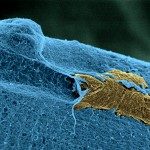Link to Pubmed [PMID] – 25786977
Eur. J. Neurol. 2015 Jun;22(6):967-72
BACKGROUND AND PURPOSE: The susceptibility vessel sign (SVS) on T2*-weighted magnetic resonance imaging has been reported in several studies as a negative predictor of early recanalization after intravenous thrombolysis. The meaning of SVS regarding the results of mechanical thrombectomy with stent retrievers was investigated.
METHODS: Susceptibility vessel sign presence and length were studied in 153 acute ischaemic stroke patients (82 men; mean ± SD age 59 ± 17 years, baseline National Institutes of Health Stroke Scale score 17.2 ± 6.5) from three stroke centres, treated with either mechanical thrombectomy alone (n = 84) or bridging therapy (n = 69). Variables were compared between recanalizers, defined as thrombolysis in cerebral infarction (TICI) scores ≥2b, and non-recanalizers (TICI<2b).
RESULTS: The SVS was present in 113 (73.8%) patients. There was no association between the presence of SVS and recanalization, obtained in 86 (56.2%) patients, in the whole population [odds ratio (OR) 1.24, 95% confidence interval (CI) 0.53-2.92, P = 0.84) and in treatment subgroups (bridging: OR = 0.91, 95% CI 0.29-2.87, P = 1.0; thrombectomy alone: OR = 1.85, 95% CI 0.48-7.16, P = 0.54). However, in SVS+ patients, recanalization decreased with SVS length (OR 0.94 for each additional mm, 95% CI 0.89-0.99; P = 0.02).
CONCLUSIONS: The success of recanalization in acute stroke patients treated with stent retrievers was related to thrombus length but not to the presence of SVS.

